Do you know how important it is to maintain the right pressure in your RV’s tires?
Many RVers neglect proper tire care, but you should only do so at your own peril. Your RV’s tires are its foundation – you’ll only go as far as your tires allow. While we’ve covered tips for tire care before, you should know how portable air compressors can help with tire maintenance.
A portable air compressor is a compact, lightweight tool that provides compressed air for inflating RV tires, performing RV maintenance, and various other purposes.
Here’s everything you need to know about portable air compressors for your RV.
Why Do You Need a Portable Air Compressor?
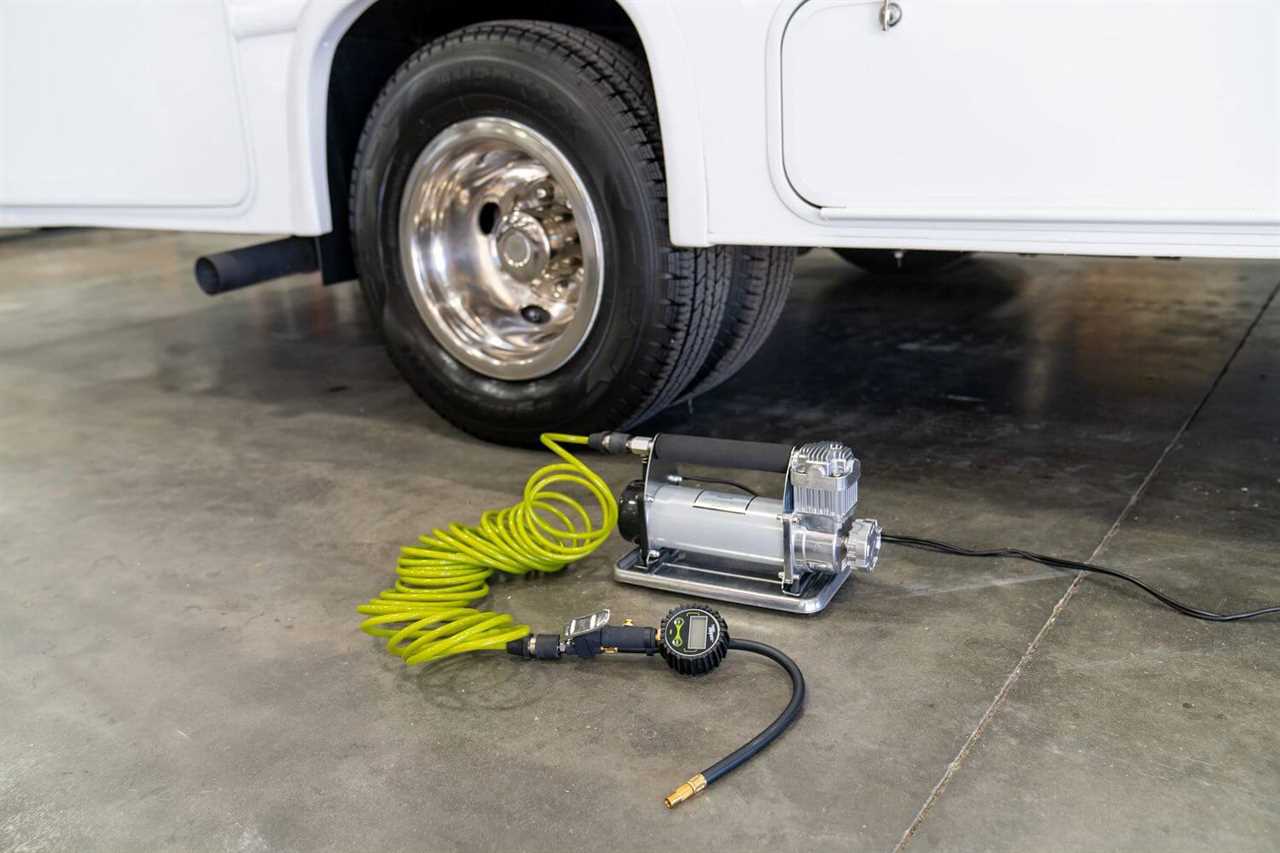
Photo by Camping World
Here are several reasons to keep a portable air compressor in your RV:
- Maintain proper tire pressure without paying for air at gas stations.
- Blow dust and pet hair out of your intake and exhaust tubes on the furnace and blower and flue tubes on the water heater.
- Clean off your RV patio mat or campsite pad.
- Inflate your stand-up paddleboard.
- Put air in your bicycle, e-bike, ATV, or dirt bike tires.
- Power portable tools that require compressed air.
What’s the Difference Between a Tire Inflator and a Portable Air Compressor?
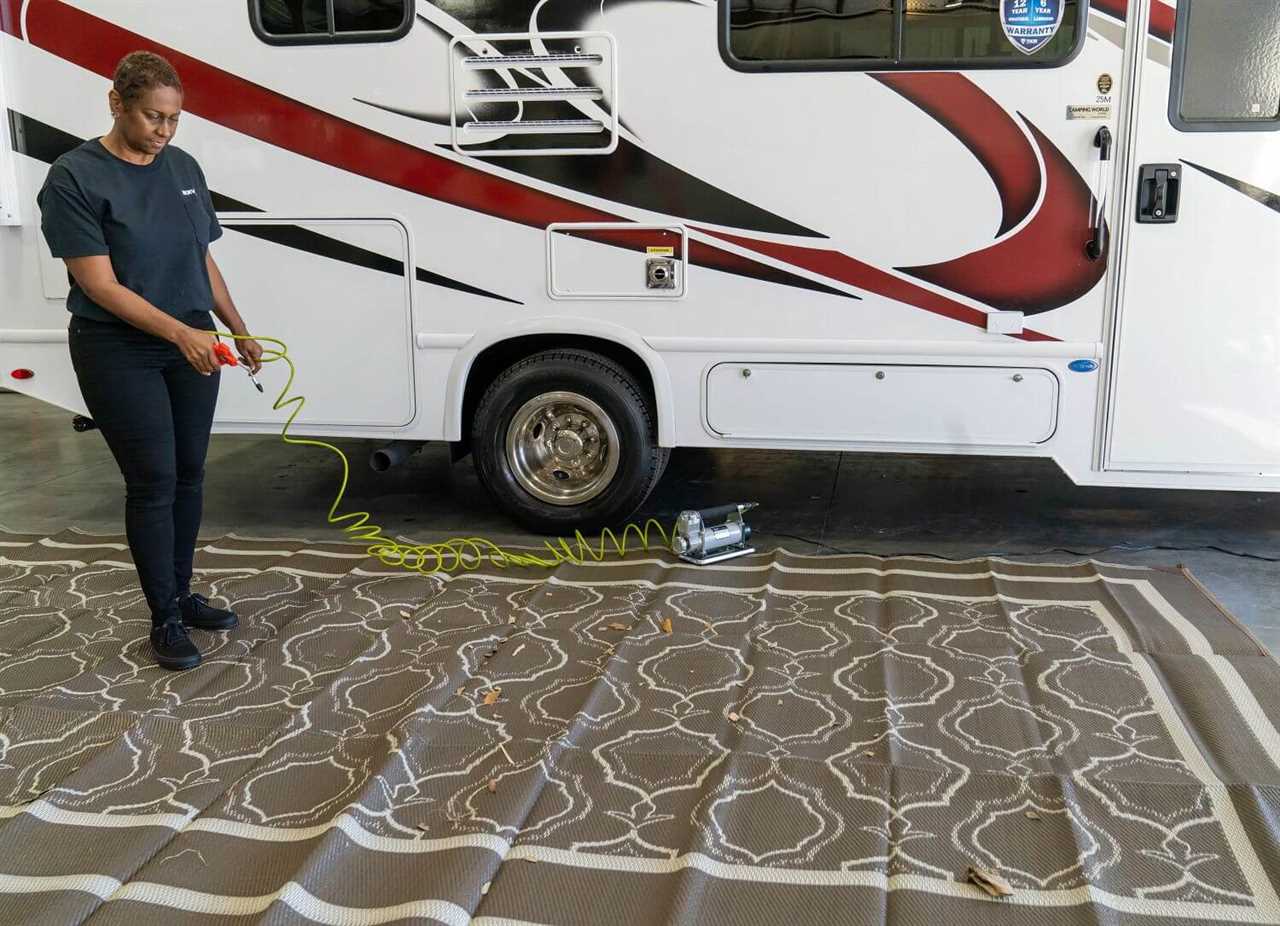
Photo by Camping World
Honestly, there’s not much difference. Tire inflators are meant for the specific purpose that their name suggests. Portable air compressors are more versatile and can be employed for myriad uses.
Generally, tire inflators move high volumes at lower pressures, while compressors move a lower volume but continue to do so up to much higher pressures. There’s a broad crossover between the two, and the performance will ultimately depend on the models you’re comparing.
How to Use a Portable Air Compressor
Technician Tip: Start by consulting the operating manual that came with your portable air compressor. There may be variations in the exact operating procedures recommended by different manufacturers.
Here are the basic steps for using most portable air compressors:
1. Check the recommended PSI for what you’re inflating.

Photo by Camping World
RV tires, paddleboards, bike tires, and other inflatables will have a recommended air pressure measured in pounds per square inch (PSI). Here are some examples of average ranges for different inflatables:
- RV Tires: 35-100 PSI
- Inflatable Paddleboards: 8-15 PSI
- Mountain Bike Tires: 25-50 PSI
- ATV Tires: 4-8 PSI
- Dirt Bike Tires: 6-18 PSI
Using a tire gauge, check the current pressure of whatever you’re inflating compared to its recommended pressure. For RV tires, check the pressure when the tires are cold, meaning you haven’t driven within the last three hours.
2. Connect the compressor to its power source.
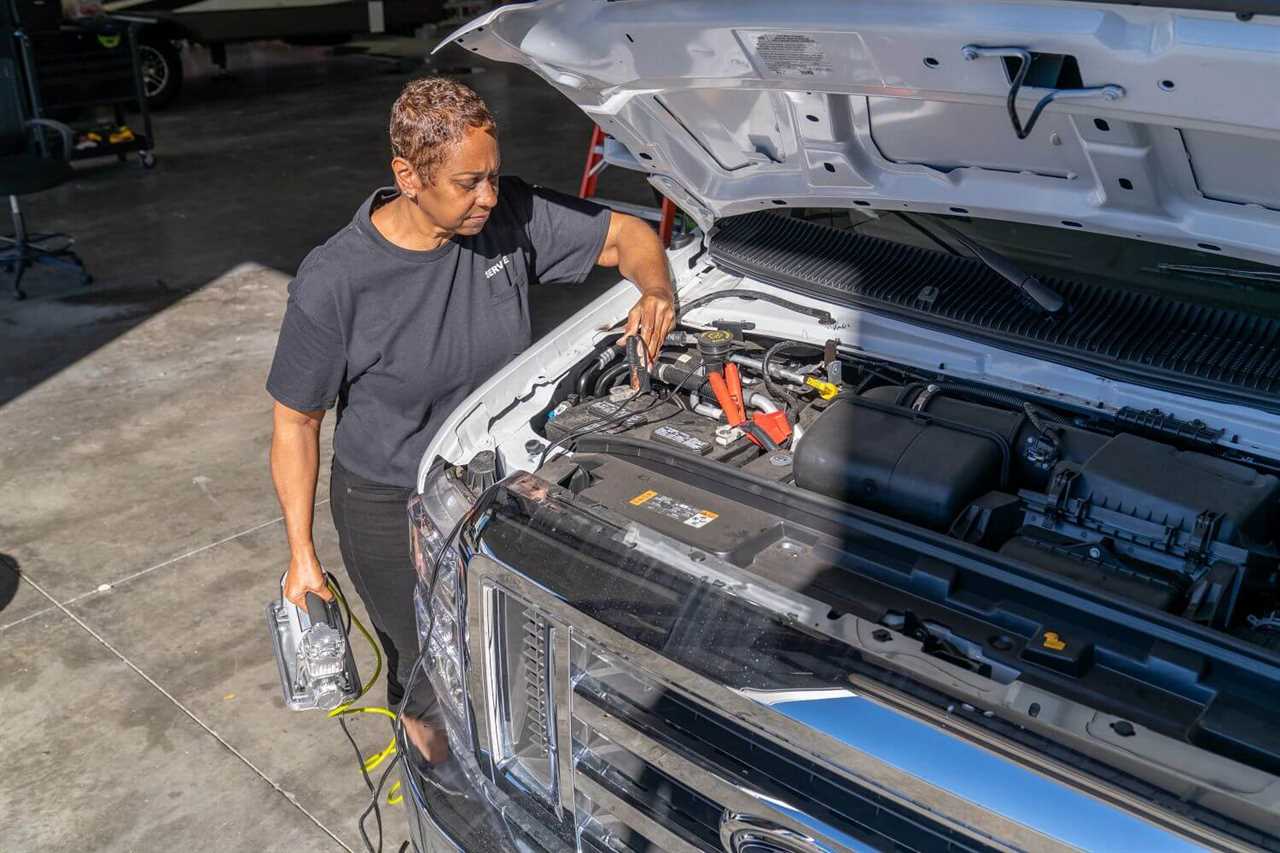
Photo by Camping World
Most portable air compressors for RV use will come with a 12-volt adapter plug. Some also come with alligator clips to connect directly to your RV battery. Others will require a 120-volt AC outlet.
Consult your compressor’s manual to find the right power source and connect it safely.
3. Connect the air hose.
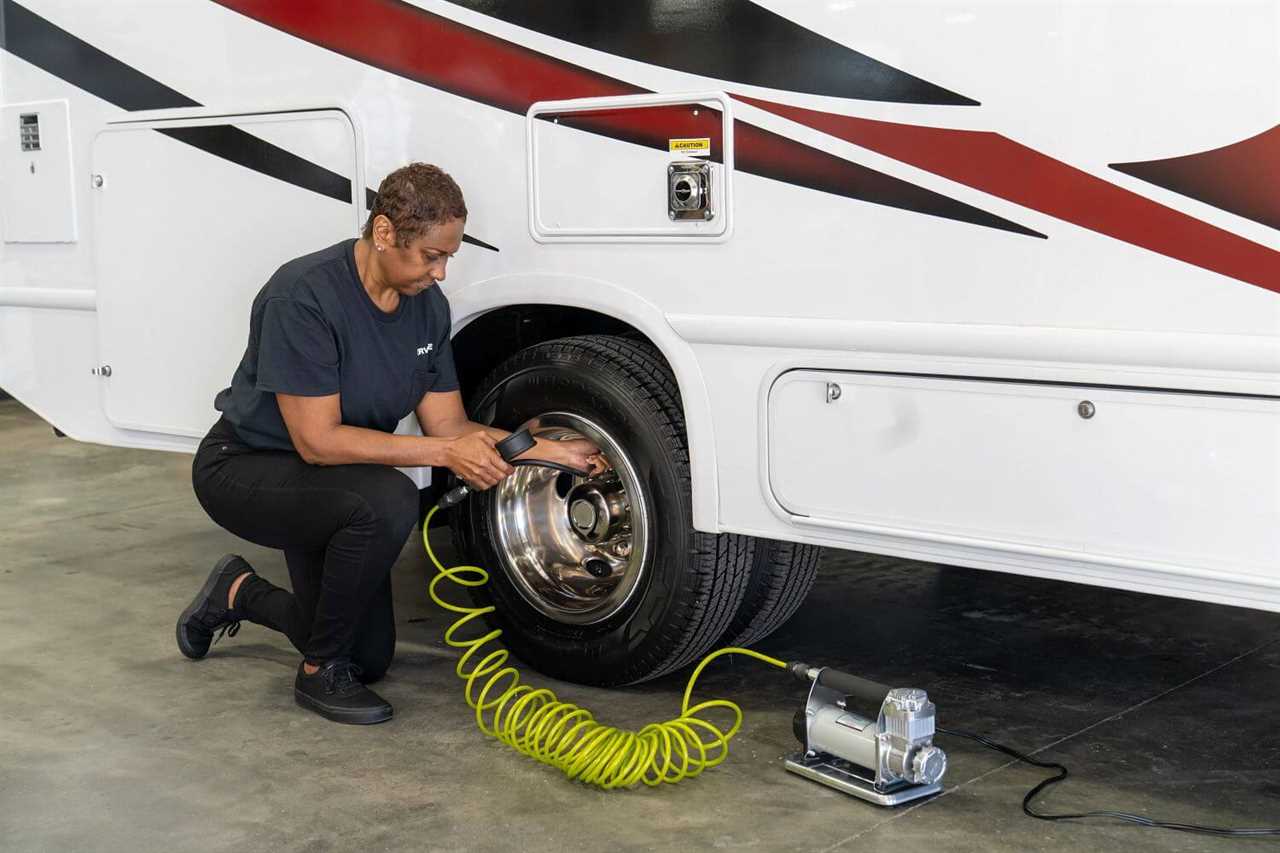
Photo by Camping World
One end connects to your air compressor if it isn’t permanently connected. The other will connect to your RV tire, paddleboard, bike tire, or whatever you’re inflating. This will require the appropriate adapter for whatever you’re filling (i.e., tire chuck for RV tires, Schrader or Presta valve for most bike tires, Boston or Halkey Roberts valves for paddleboards, and other watersports inflatables).
4. Turn on the compressor.
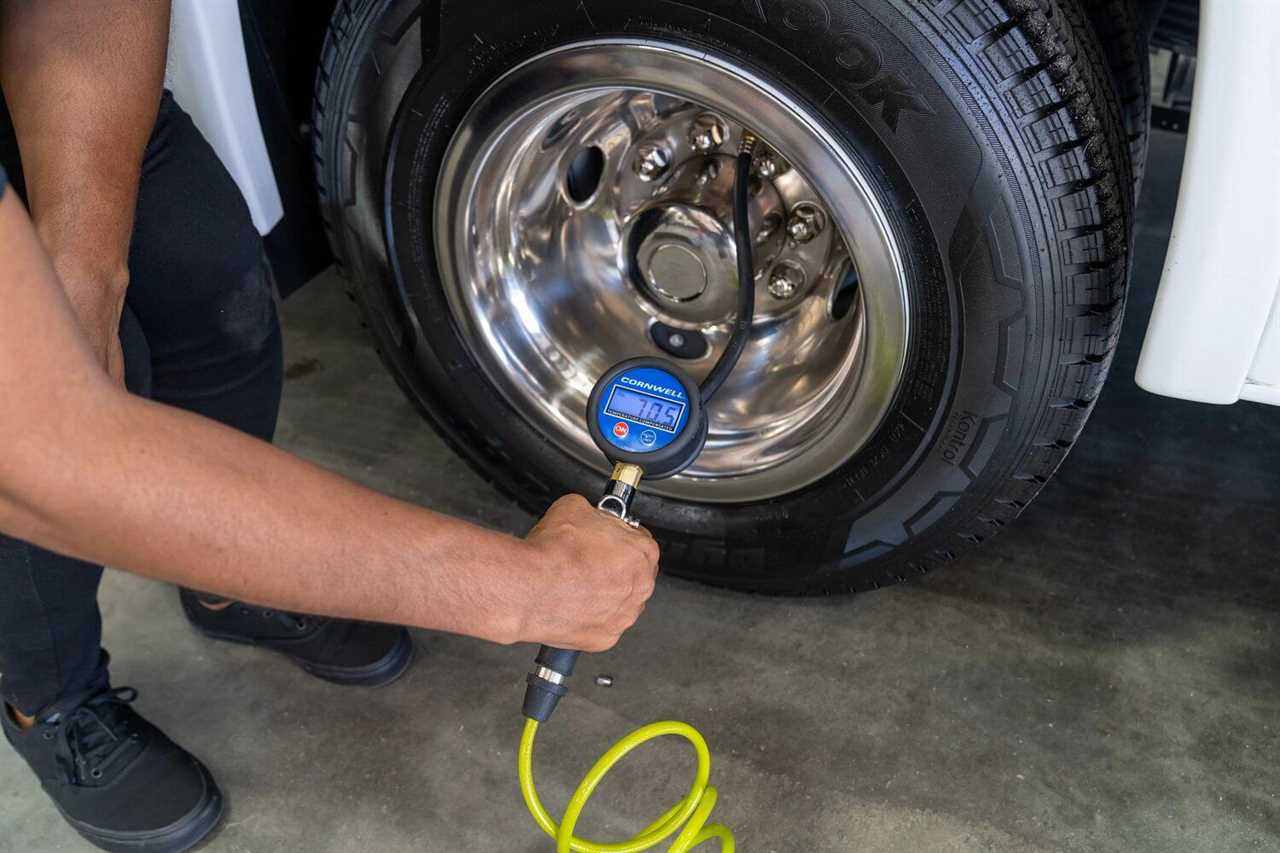
Photo by Camping World
You may only need to run your compressor for a few seconds for smaller inflatables. This is also true if you’re topping off RV or bike tires. Getting a compressor with a built-in gauge is the easiest way to ensure you’ve reached the recommended air pressure. Otherwise, you’ll need to disconnect the compressor from whatever you’re filling and check with a pressure gauge.
5. Disconnect the compressor and store it properly.
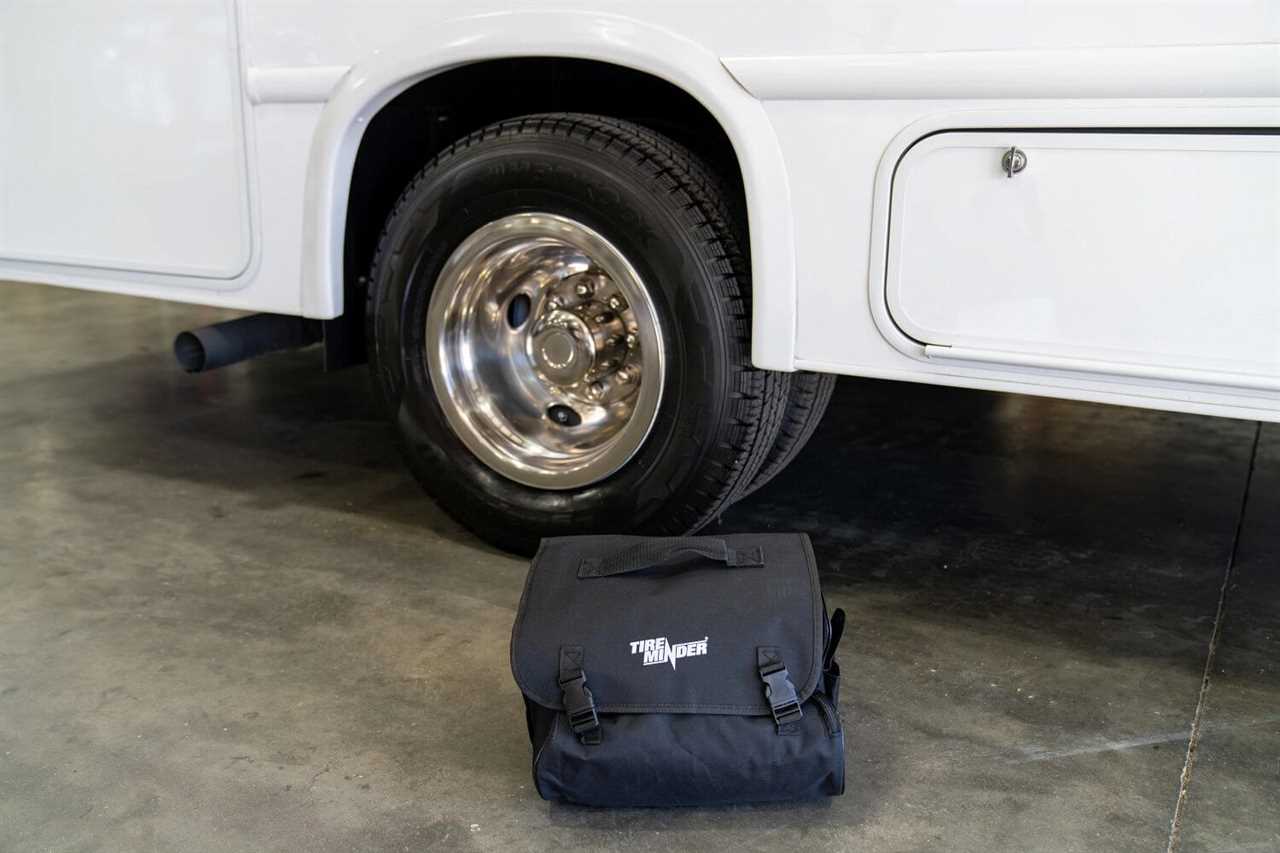
Photo by Camping World
Once your inflatables are at the desired pressure, disconnect the compressor, cap the valve on your tire or inflatable, and store the compressor safely in its case. If yours didn’t come with a case, consider using a storage bin that allows you to seal your compressor and protect it between uses.
Technician Tip: Portable air compressors can get very hot during use. Allow yours to cool in a safe place before storing it away.
How Do You Choose a Portable Air Compressor for your RV?
Here are a few factors to help you select the right portable air compressor for your RV:
Size and Weight
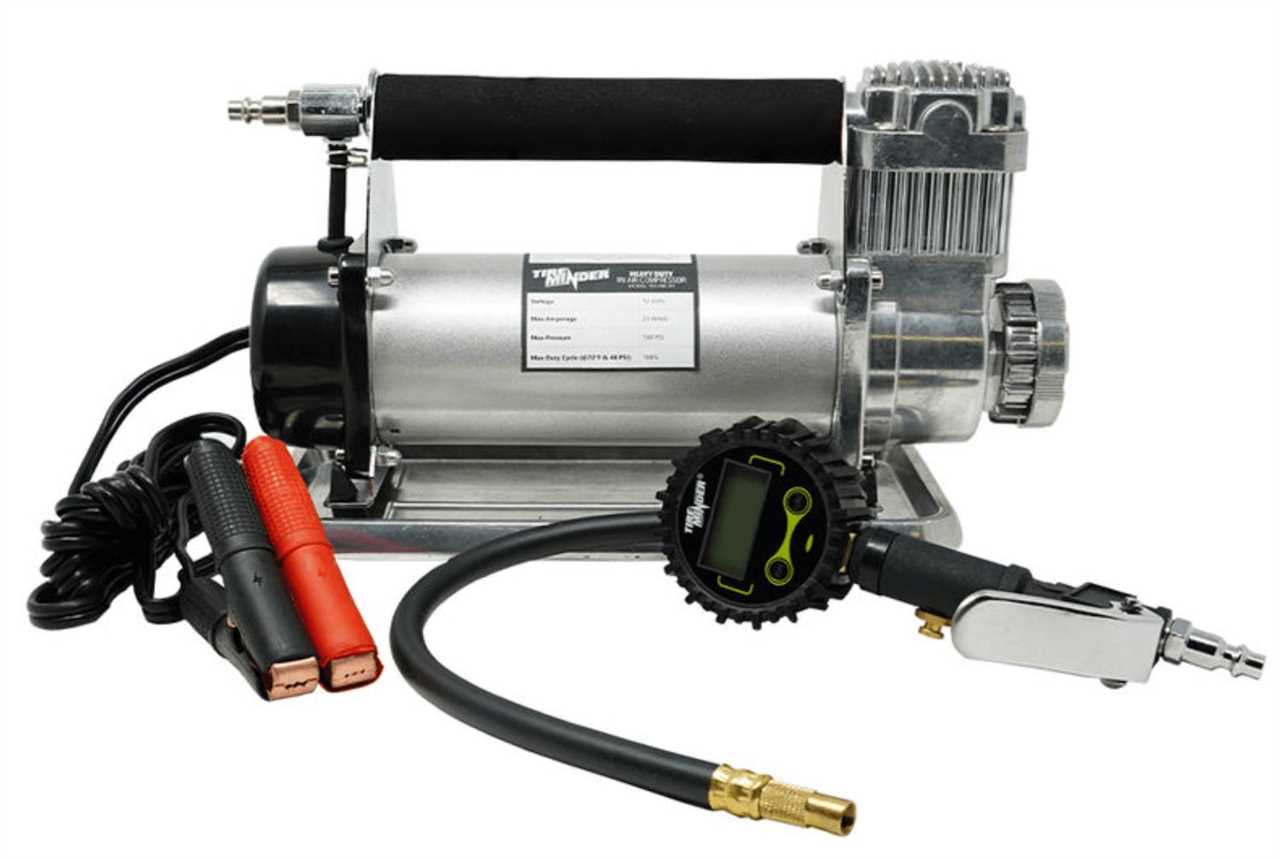
Photo by Camping World
We are talking about “portable” air compressors, but some models are much larger than others. The kind you’ll want for your RV must easily fit in one of your underneath storage compartments. It must also be light enough to move and easily set up wherever needed.
Cubic Feet Per Minute (CFM)
CFM is defined as “a measurement of airflow volume, determined by how many cubic feet of air pass by a stationary point in one minute.” For practical purposes, a compressor with a higher CFM rating will fill inflatables more quickly.
Technician Tip: Remember that CFM can vary depending on temperature, atmospheric pressure, and humidity levels.
Pounds per Square Inch (PSI)
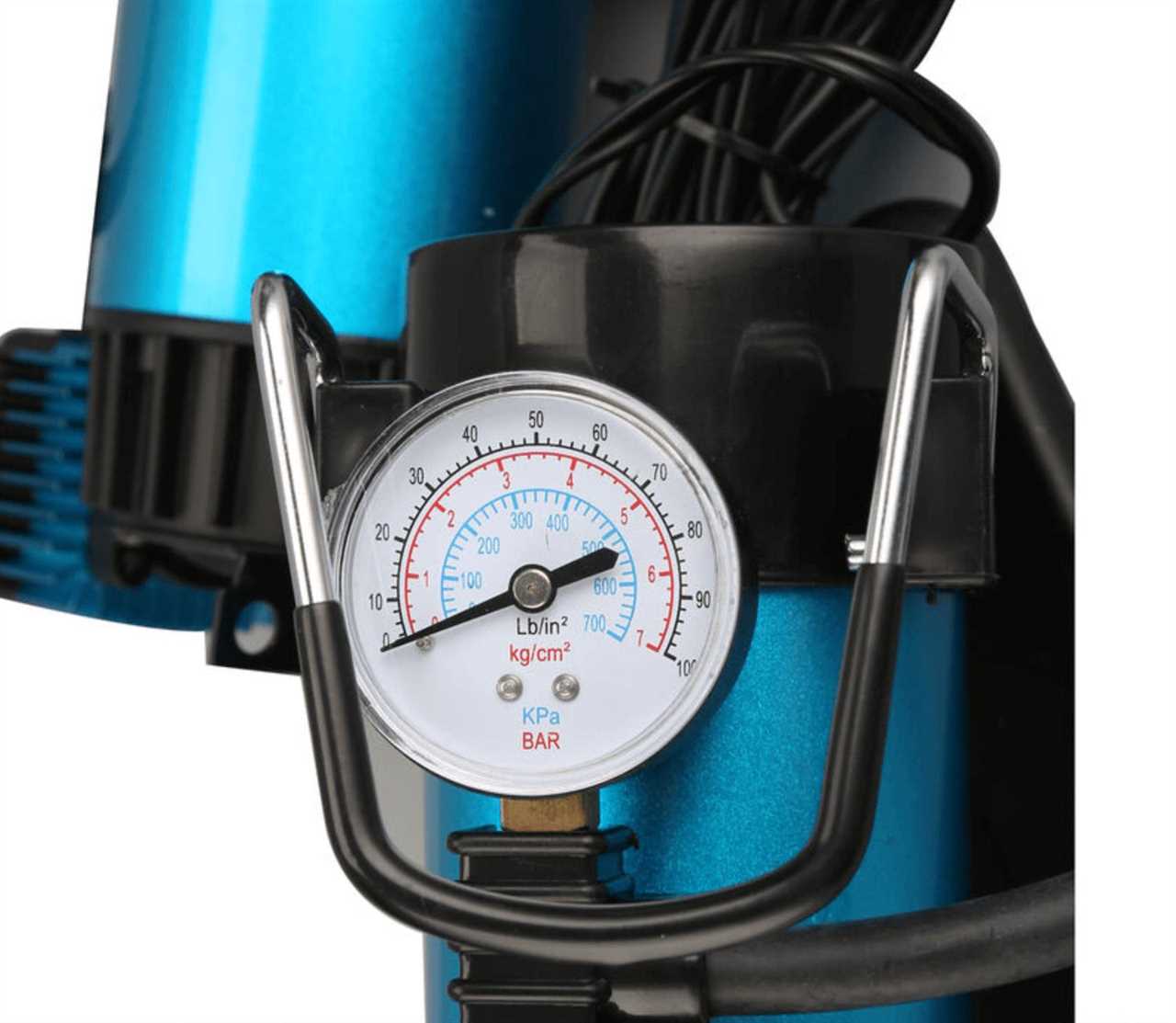
Photo by Camping World
Most manufacturers advertise the maximum pressure that their compressors can achieve. This is especially important when you need a compressor that can fill larger RV tires, such as those on class A RVs. Ensure your compressor can fill tires to the recommended pressure stated by your RV’s manufacturer.
Duty Cycle and Run Time
This is the length of time a compressor can run at a full load before needing to cool down. Overheating can be problematic with cheaper portable air compressors, which is why many nicer models include an automatic overheating shutoff feature.
Power Source
Look closely to ensure you can use the air compressor in various settings. The best models offer multiple power adapters for 12-volt and 120-volt capability. When RVing, the main emergency scenario in which you’ll need an air compressor is addressing flat tires on the side of the road.
If you have a nail in your tire, or a slow leak, an air compressor could help get you to a safer place to assess the tire and make a patch or a change. In this case, a compressor with 12-volt capability is essential.
Air Hose and Power Cord Length
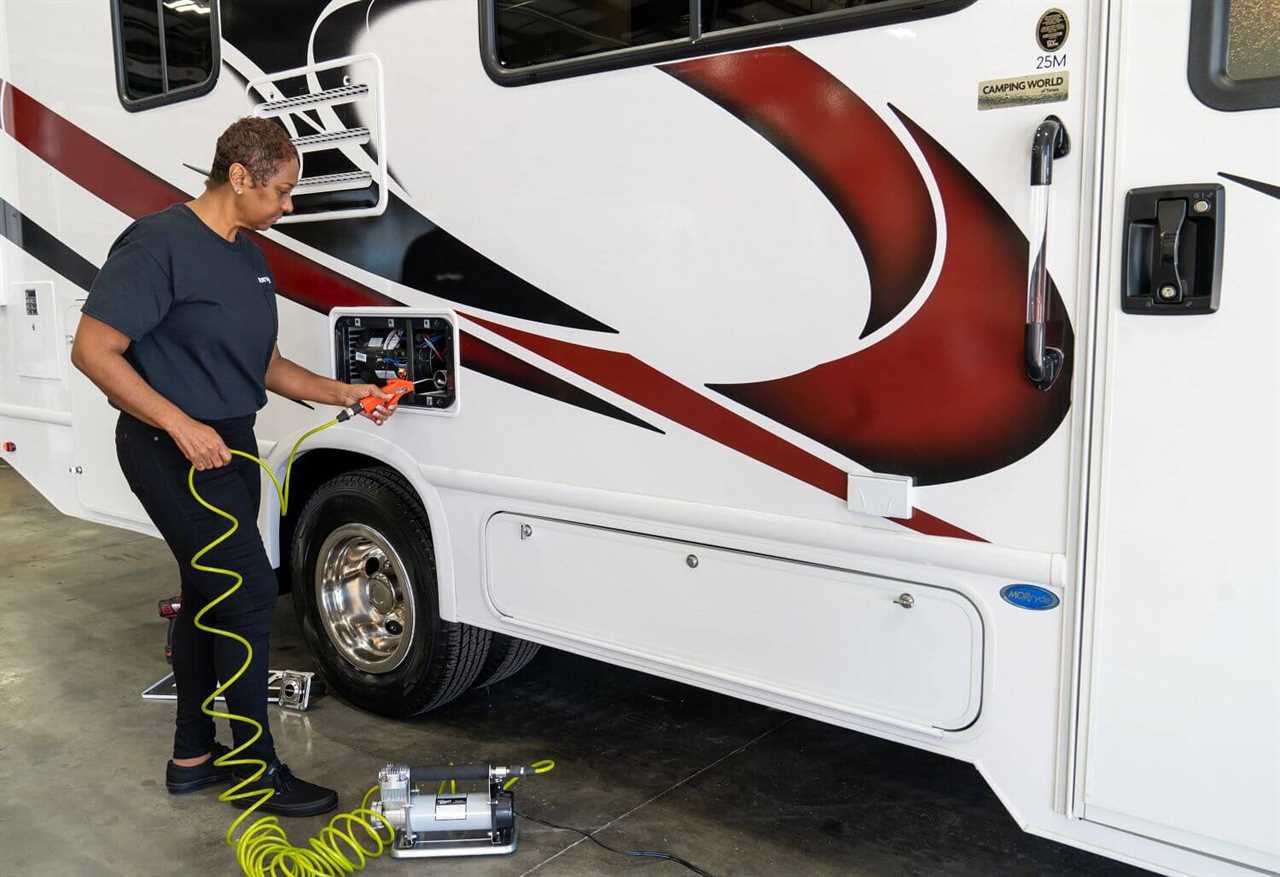
Photo by Camping World
The lengths of your compressor’s air hose and power cord determine whether you can reach all your tires. This is especially important for longer RVs, and you’ll simply need to ensure you can reach every tire to fill them evenly, according to your RV manufacturer’s recommendation.
Learn the importance of following your RV manufacturer’s recommendation and other essential information about RV and trailer tires.
What is the Best Portable Air Compressor for your RV?
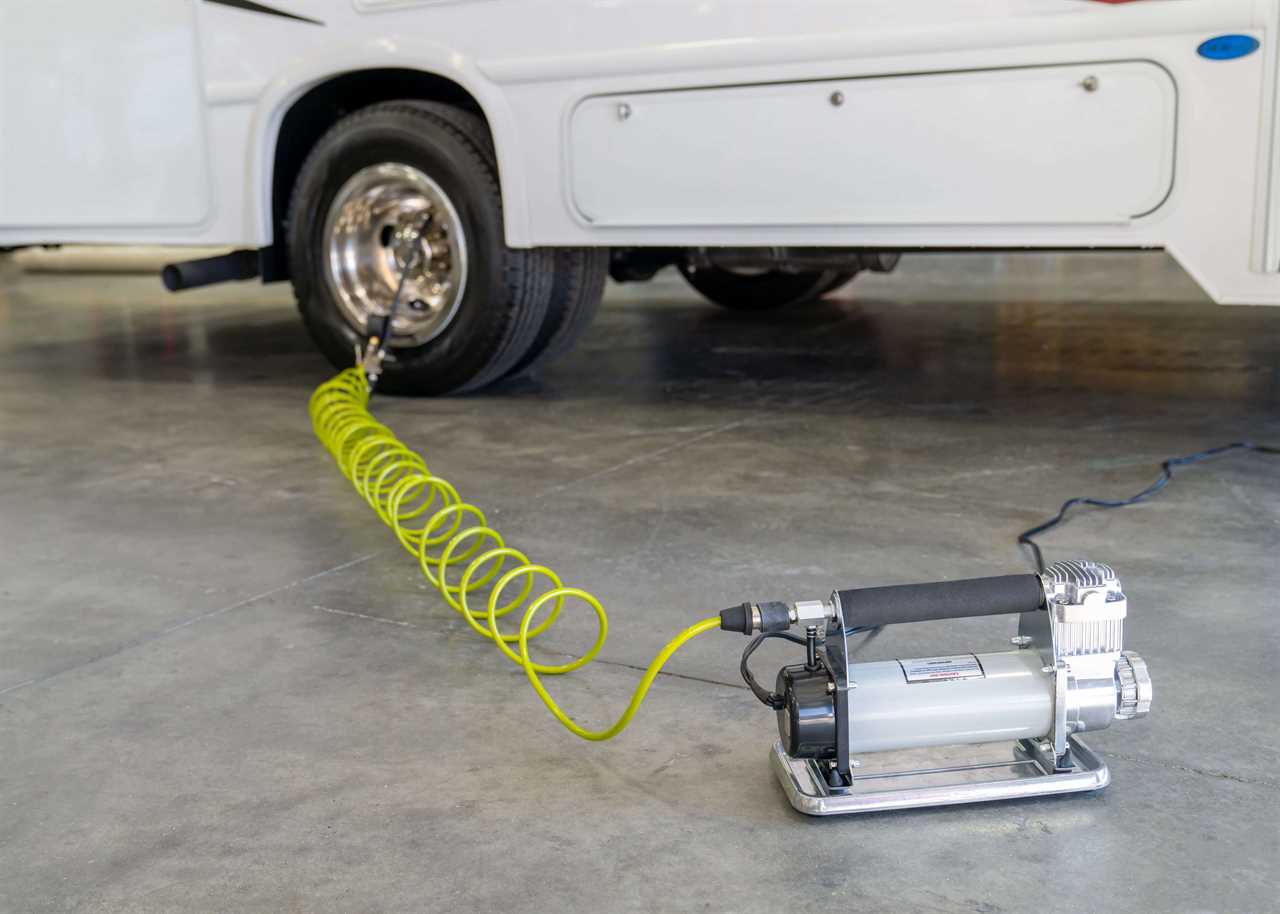
Photo by Camping World
Because the most common use for a portable air compressor amongst RVers is filling tires, let’s start there. The best portable air compressor for your RV should be rated to fill your tires to the manufacturer’s recommended air pressure (PSI).
Check out this review of the TireMinder RV AIR Compressor.
You’ll also want something light and compact to move easily and store in your RV. Most RVers will be fine with a tire inflator or a hand-carry air compressor, neither of which is really meant for air tools.
If you have some RV DIY projects in mind, you’ll need a more powerful compressor rated for the tools your project calls for.
Shop portable air compressors and tire inflators at Camping World.
From keeping the right amount of air in your tires to quickly inflating paddleboards so you can get out on the lake, a portable air compressor is a great addition to your RV toolkit. Here are some other resources to help you complete your RV tool collection:
- Cordless Power Equipment RV Campers Love
- 21 Emergency Essentials for RV Owners
- 10 Must-Have Campfire Accessories for Your Next Camping Trip
- Here’s Everything You Need to Go Off-Grid Camping
Do you have any questions about portable air compressors for your RV? Let us know in the comments below.
By: Tucker Ballister
Title: A Guide to Portable Air Compressors for Your RV
Sourced From: blog.campingworld.com/rv-basics/a-guide-to-portable-air-compressors-for-your-rv/
Published Date: Thu, 09 Feb 2023 15:00:50 +0000
---------------------------------------------
Did you miss our previous article...
https://outdoorsnewswire.com/camping/super-bloom-civility-look-but-dont-crush-the-flowers
 CampingSurvivalistHuntingFishingExploringHikingPrivacy PolicyTerms And Conditions
CampingSurvivalistHuntingFishingExploringHikingPrivacy PolicyTerms And Conditions
